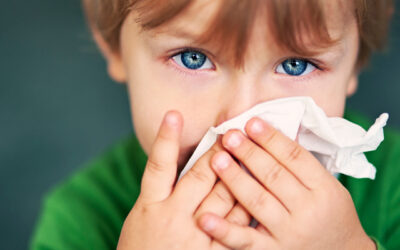It’s been more than 100 years since the Sisters of the Franciscan Missionaries of Our Lady set sail from France, but God had different plans, and they made their way to Monroe, Louisiana, on a firm mission to provide medical care in a state so beset by poverty that many simply went without.
The Sisters established St. Francis Medical Center in 1913, the first of what would blossom into a regional healthcare ministry with dozens of clinics, doctor’s offices and hospitals that serve Louisiana, Mississippi and beyond.
No patient in the organization’s care faces greater challenges than children. Injury, obesity and other chronic conditions are so prevalent that children in Louisiana and Mississippi are among the unhealthiest in America.
But their future looks brighter now thanks to the emergence of Our Lady of the Lake Children’s Health. The network has extended advanced and specialized care even to the most remote communities, ensuring every child has a fighting chance for a healthier tomorrow.
“It’s what our message of ‘Believe in Me’ is all about,” says Alston E. “Trey” Dunbar III, MD, president of Our Lady of the Lake Children’s Health and a specialist in neonatal medicine. “Our objective is for children to be healthier tomorrow, whether they’re directly in our care or whether they benefit from improved standards of care we help affect among all pediatric providers.”
Today, the children’s health network has more than 300 pediatric specialty providers in dozens of medical disciplines and includes partnerships with pediatricians and pediatric specialists around the state. They’re all aligned and driven to improve the quality and safety of care for all children.
Taking Steps Forward
For Louisiana’s children, 2019 was a momentous year. In the spring, Lafayette’s Women’s & Children’s Hospital joined Our Lady of Lourdes in a historic acquisition, bringing together an unmatched team of skilled pediatric specialists, facilities and resources that’s helping families throughout Acadiana as far west as Lake Charles and as far north as Alexandria.
In October, Our Lady of the Lake Children’s Hospital moved to a new Baton Rouge campus. Designed from the ground up to serve children, the hospital offers the most advanced and specialized care available to families closer to home.
Two important developments serve to build collaborations and began in 2015 when St. Francis Pediatrics teamed up with Our Lady of the Lake Children’s Hospital, which at the time was located within Our Lady of the Lake Regional Medical Center.
“We started more fruitful discussions of patient care and common quality and best practices,” Dr. Dunbar says. For example, critical care specialist physicians began working part-time at St. Francis Medical Center, adding to on-hand expertise at the northeast region’s only pediatric intensive care unit.
Growing Accessibility
That partnership helped to set the tone for collaborations that continue to grow and expand today, creating access points for patients to receive excellent care close to home.
For example, neonatal specialists at the Newton & Betsy Thomas Family Center for Newborn & Infant Intensive Care at Our Lady of the Lake Children’s Hospital in Baton Rouge provide support to Our Lady of the Angels, a sister community hospital in Bogalusa, which provides labor and delivery services.
“If they need advanced neonatal care in the delivery room, we’re not only available by phone, but now we’re adding telemedicine support for their resuscitation room,” Dr. Dunbar says. “We’re able to support better follow-up care without having to be there.”
The NICU transport teams at St. Francis Medical Center and Our Lady of Lourdes Women’s & Children’s Hospital also go to delivery rooms at smaller hospitals to transport critically-ill newborns to their respective hospitals for specialized care.
Rather than requiring patients to conform to a rigid network of care, the Children’s Health network stays flexible so it can create novel partnerships tailored to meet the demand.
“Realistically, pediatric specialists are rare, and they can be overwhelmed pretty quickly with the need for care. So, we utilize specialists within our system so they have the maximum impact on care,” Dr. Dunbar says. “Sometimes that means physically being there, sometimes it’s a telemedicine approach, and sometimes it’s transferring a child to one of our other systems for specialized care.”
Similar collaborations are underway in medical research, with teams across the Children’s Health network sharing data, writing papers and working as lead investigators, Dr. Dunbar says.
“Our vision is no matter where you receive care in our system, you have access to the highest level of care,” he says. “We’re heading in that direction now.”




